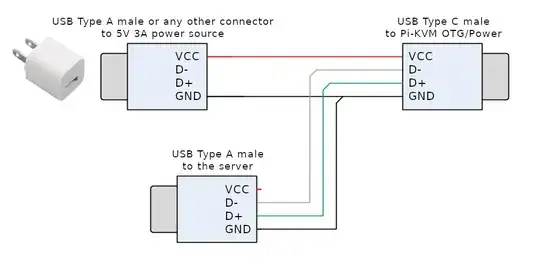For my PIKVM I want to use the OTG functionality of the USB-C port of my Raspberry Pi 4 to control the mouse and keyboard, however, I want to power the Raspberry via the GPIO pins instead, because I don't really like the Y-cable solution so much - and as far as I know, the RPI 4 doesn't have a polyfuse for the USB-C port anyway, so there is no benefit from exclusively using the USB-C port.
However, is it enough to connect the host (mainboard) using a USB 2.0 <-> USB-C cable to the Raspberry and to disconnect VBUS? In this tutorial where they show how such a Y-cable is made they only disconnect VBUS:
On the other hand, in this answer a user explained that only connecting D+, D-, and GND is not really that safe because the voltage level of D+/D- could be higher than VBUS. What I understood is, that one would have to make sure that the cable from the host to RPI is not plugged in before the PSU for the RPI is. Why is that?
Both server and PIKVM will run 24/7, so they are not regularly disconnected, but I don't want to risk anything.
